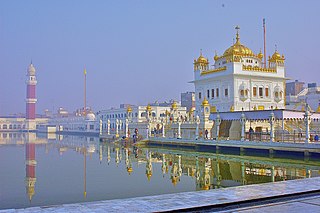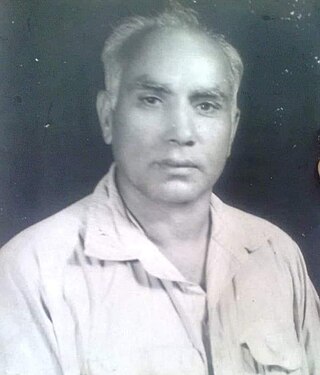Beas is a riverfront city in the Amritsar district of the Indian state of Punjab. It is located, just 43 km from Amritsar city, the district headquarters. Beas lies on the banks of the Beas River. Beas town is mostly located in revenue boundary of Budha Theh with parts in villages Dholo Nangal and Wazir Bhullar.Beas falls in Amritsar district situated in Punjab state, with a population 55295. The male and female populations are 28921 and 26374 respectively. The size of the area is about 68.75 square kilometer. Beas railway station is the best and cleanest railway station in the india 2018. Radha Swami Beas hospital is the best Charitable Hospital in the punjab . Beas railway station is located on the boundaries of beas. And Budha Theh is a census town in Baba Bakala tehsil of Amritsar district.

Tarn Taran Sahib is a city in the Majha region of the state of Punjab, in northern India. It is the district headquarters and hosts the municipal council of Tarn Taran district. Gurdwara Sri Tarn Taran Sahib, a prominent Sikh shrine, is located in the central part of the city.

Batala is the eighth largest city in the state of Punjab, India in terms of population after Ludhiana, Amritsar, Jalandhar, Patiala, Bathinda, Mohali and Hoshiarpur. Batala ranks as the second-oldest city after Bathinda. It is a municipal corporation in Gurdaspur district in the Majha region of the state of Punjab. It is located about 32 km from Gurdaspur, the headquarters of the district. It is also a Police district. Batala holds the status of the most populated town of the district with 31% of the district's total population. It is the biggest industrial town in the district.
Phillaur is a town and a municipal council as well as a tehsil in Jalandhar district in the Indian state of Punjab. The city is situated 20 km from Ludhiana, 45 km from Jalandhar and 140 km from Amritsar. It is situated on the border of the Doaba and Puadh regions. Thr city was Founded by a Hindu Jat, Chaudhary Phul Rai Sanghera, during the 12-13th century as Phulnagar, but later came to be known as Phillaur.

Doaba, also known as Bist Doab or the Jalandhar Doab, is the region of Punjab, India that lies between the Beas River and the Sutlej River. People of this region are given the demonym "Doabia". The dialect of Punjabi spoken in Doaba is called "Doabi". The term "Doaba" or "Doab" is derived from Persian دو آب meaning "land of two rivers". The river Sutlej separates Doaba from the Malwa region to its south and the river Beas separates Doaba from the Majha region to its north.
Balachaur is a town in Balachaur Tehsil in the Shaheed Bhagat Singh Nagar District of Punjab, India.
Fatehgarh Churian is a town located in Gurdaspur district in Punjab, India. It is nearby Gurdaspur city, the district headquarter. It is a municipal council of the Gurdaspur district. The city lies 15 kilometres from the Pakistani border. It is located 485 kilometres north of New Delhi, India.
Thoha Khalsa is a village in Kahuta Tehsil, Rawalpindi District in Punjab Province of Pakistan.
Sang Dhesian is a village in Phillaur tahsil of Jalandhar district of Punjab state of India known for Baba Sang ji Gurdwara.

Punjab has a long history of education.
Bundala, also spelt as Bandala, is a large village in Jalandhar zillah situated in Tehsil Phillaur within the Indian state of Punjab and is located in the centre of the Doaba region of Punjab.

The Panjab Digital Library is a voluntary organization digitizing and preserving the cultural heritage of Panjab since 2003. With over 65 million digitized pages, it is the biggest resource of digital material on Panjab. There are many historically significant documents stored and made available online. Its scope covers Sikh and Punjabi culture. The library funded by The Nanakshahi Trust was launched online in August 2009. Its base office is located at Chandigarh, India.
Uppal Jagir and Uppal khalsa are villages in the tehsil of Phillaur, near Nurmahal, Jalandhar district, in Punjab, India.
Virk is a village near Phagwara, but falls within Tehsil Phillaur, Jalandhar district, in Punjab, India. The village was occupied by residents with surname Virk of Rajput - Jat community, after migration of 1947. The village has continued to tell the tale of accommodating a virk child, that lost both parents, and sheltered in the village to escape exploitation from Dhillon - Marasi / Marasi.
Moranwali is a village near Banga, Punjab, India but falls in Tehsil Garhshankar (Hoshiarpur), Hoshiarpur district, in Punjab state.

Gurdev Singh Gill is a former Indian football player. He hails from Punjab. He was honoured with Arjuna Award, the highest sports award in India in the year 1978 for his achievements as a football player.

Pandit Kishori Lal was a communist Indian revolutionary from Punjab who worked with Sukhdev Thapar and the Hindustan Socialist Republican Association (HSRA).
Dera Khalsa is a village in the Kallar Syedan Tehsil, Rawalpindi District, Punjab province of Pakistan. The name was given by rulers of this region during Sikh rule in Punjab. This name is still used to refer this village. Presently the entire population of this village is Muslim, having strong religious beliefs and 95% of existing families are migrated from Jammu in 1947. Presently residing families settled in this village in 1951–52.

Punjab Institute of Medical Sciences is a medical college and medical research institute based in Jalandhar, India.









